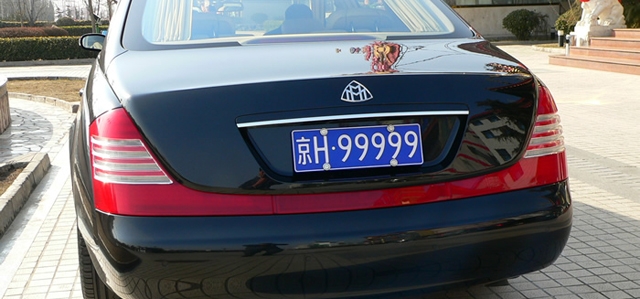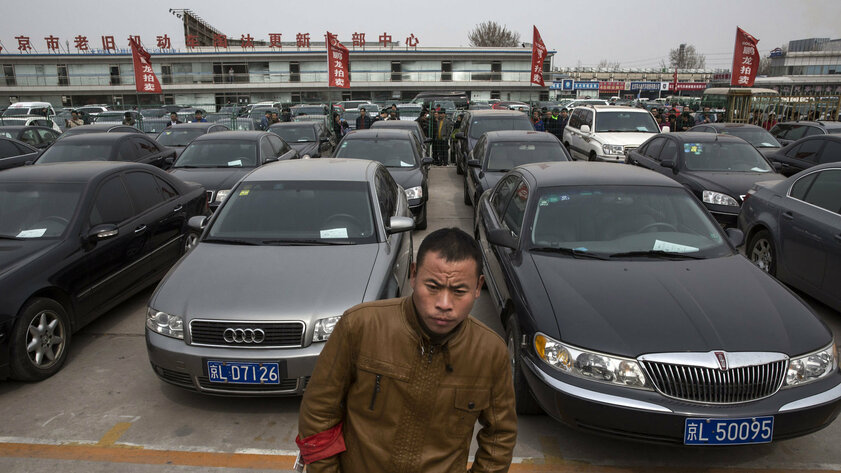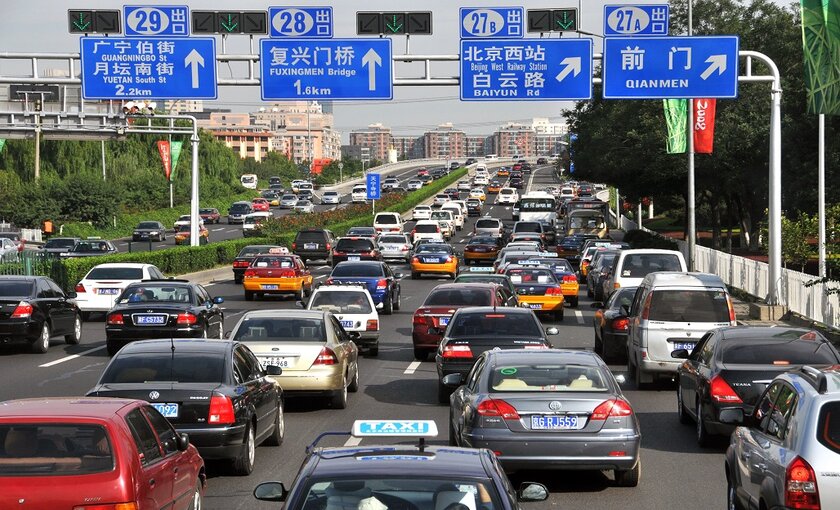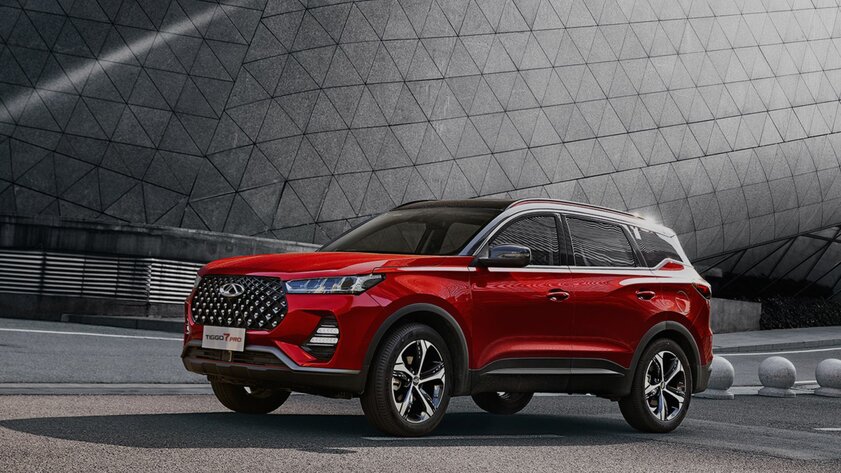Recently, the Russian automotive market has been actively conquered by representatives of the Chinese automotive industry, offering a huge range of internal combustion engines and electric cars for literally every taste and budget. And, accordingly, on the net you can increasingly hear the opinion that cars in China are two to three times cheaper, and in Russia the same models are sold at some exorbitant prices, which, of course, the audience does not really like. I studied this issue and came to the conclusion that comparing prices in Russia and China is completely wrong for a number of factors – they are, literally, two completely different universes.
The case when the license plate stands like the car itself
The main feature of the Chinese car market is a rather unusual mechanism for obtaining state license plates for vehicles, which acts as a natural regulator of road traffic in China. It is probably no secret to anyone that the population of China, to put it mildly, is quite impressive, so that the population density in the country is off scale, especially when it comes not to remote provinces, but to large metropolitan areas. At the same time, you need to understand that cars in China are cheaper than in most countries of the world, since factories produce sedans and crossovers for the domestic market, where a potential buyer does not need to pay for customs, transportation costs, and more.
It turns out that China has a huge population density, a decent length of the roadway and low car prices – with such a set of conditions, the country could simply drown in endless traffic jams and harmful emissions. In order to somehow regulate the situation, in the Celestial Empire they came up with a very interesting way to discourage the desire to own a car – in addition to the fact that a person must save up for the vehicle itself, after the purchase, he will also have to participate in an auction for a license plate. And if in Russia, with proper dexterity, a car can be registered and licensed in three to four hours, then in China it takes an insane amount of time.

The state artificially creates a deficit for license plates – about ten thousand license plates are given to motorists for auction per month, but there are twenty times more people who want to get them. Yes, there are only 10,000 numbers for 200,000 applicants. As a result, the owner of a new car has to wait about three months (in some cases up to six months) to change the transit plates to full-fledged license plates. But that’s not all – in addition to the fact that you need to defend a huge queue for the number, you still need to pay a lot of money for it. In large cities and densely populated provinces, the price of a lot, that is, a number, starts at 80-100 thousand yuan, which is about 11-14 thousand dollars or 600-850 thousand rubles.

Unfortunately for Chinese car enthusiasts, this is the initial price of the lot – in the largest provinces of China, the price of the most common license plate can reach 20-30 thousand dollars. And this is not a rarity or a unique event, but quite a norm for the local market. Due to such huge prices for license plates and their meager number, the state simply regulates the traffic flow, eliminating the potentially huge problem with traffic jams not only in large cities, but also beyond. A potential car buyer simply understands that he needs not only to buy a car, but also to pay then under 30 thousand dollars for a license plate – and refuses this idea in favor of public transport or a taxi.
The trick you came up with won’t work
The peculiarity of the above mechanism for controlling traffic on the roads has led to the fact that in some small provinces license plates can be issued completely free of charge or for some relatively ridiculous money of a thousand or two dollars. Accordingly, many of the cunning readers could come up with a cool plan in their heads – why not buy a car, for example, in Beijing, and then go with it to a remote town and get a number there for a penny. This is really a good idea, but in China everything has been thought out for a long time and any such tricks were cut down in the bud ten to twenty years ago.
Here I would like to clarify that China is simply full of security cameras – both for people and for cars. These cameras, together with a powerful database system, are able to determine in which of the provinces the license plate was obtained, and this imposes many restrictions, due to which no one will cheat with the license plate. For example, if a car owner has received a number plate in a town in the south of the country, then he simply will not be able to use bridges, highways, parking spaces and many other important infrastructures in Beijing – fairly decent fines are provided for this.

It may seem wild, but in the same Beijing there is a rule according to which certain numbers go only on even days of the month, while others – on odd ones. If the camera detects a “forbidden” number, then the owner will pay a lot of money and lose points (about them a little later) – the situation is similar with numbers from “foreign” provinces. Of course, Chinese residents can travel around the country and no one will forbid you to enter another city, but no one will allow you to travel around the metropolis on the numbers of a distant sparsely populated province. The system will tritely track the number of visits to the settlement and the cunning driver will have to pay a lot of money.
But monetary penalties in China are still half the trouble – the local law enforcement agencies that are responsible for vehicles have a points system. The average driver with little experience is given 12 points per year – for every violation, whether it’s illegal parking or speeding, these points are removed. And if by the end of the year you have violated so many that all your points have been taken away, then the rights will be canceled – you will need to retake exams and so on. Because of this, it never occurs to anyone to deceive the system by ordering numbers not from their city – for this they will not only be fined, but also deprived of the right to drive in general.
Direct comparison of real prices in China and Russia
In order not to be unfounded, I decided to compare the price in China and Russia for the rather popular urban crossover Chery Tiggo 7 Pro – this is not a premium model, but a bright representative of the middle class, which is clearly in demand in both markets. So, the cost of a crossover in China after being converted into rubles will be 780,000 rubles for a version with a 1.5-liter engine with 156 horsepower. In Russia, the same car is sold for 2,439,000 rubles, which, with a rough comparison, results in the conclusion: “In China, it is three times cheaper.” But now let’s calculate that the buyer of Chery Tiggo 7 Pro in China will have to pay an average of 20 thousand dollars for license plates (somewhere around 12, somewhere around 30 thousand – I decided to average the costs).

If you do not want to wait three months, then you can pay the dealer another 3-5 thousand dollars to get a number almost immediately. But, let’s say, it’s not burning for us and we can wait – it turns out that another 1,216,000 rubles for a license plate need to be added to the price of a car in the cabin. In addition, when buying a new vehicle from a dealership, a motorist still needs to pay a one-time tax of 10% of the cost of the car, that is, in our case, 78 thousand rubles. As a result, the Chinese owner of the Chery Tiggo 7 Pro car will pay for it not 780,000 rubles, as it is written on the price tag in the cabin, but 2,074,000 rubles.
But this is the cost of the car in China itself – it was assembled at the factory and sent to the dealer to the salon, without raising the price of customs fees. If we add another 20% to the price of the car for customs and take into account the costs of transporting the vehicle to Russia (for example, to Moscow), then the difference in price will be one hundred thousand at most.
Do not compare prices in China and Russia – this is a mistake
So it turns out that in fact, cars in China are not so affordable – they just have a lower price for the vehicle itself, for obvious reasons. But if you delve into additional subtleties, it turns out that cheap cars from China are just a myth, and comparing prices from press releases in yuan (translating them into rubles) with price tags in Russian showrooms is a fatal mistake. In fact, Chinese buyers pay almost as much as Russian buyers, only they also spoil their nerves in trying to snatch at least some number at huge auctions.
Source: Trash Box
Johanna Foster is an expert opinion writer with over 7 years of experience. She has a reputation for delivering insightful and thought-provoking articles on a variety of subjects. Her work can be found on some of the top online news websites, and she is currently lending her voice to the world stock market.







